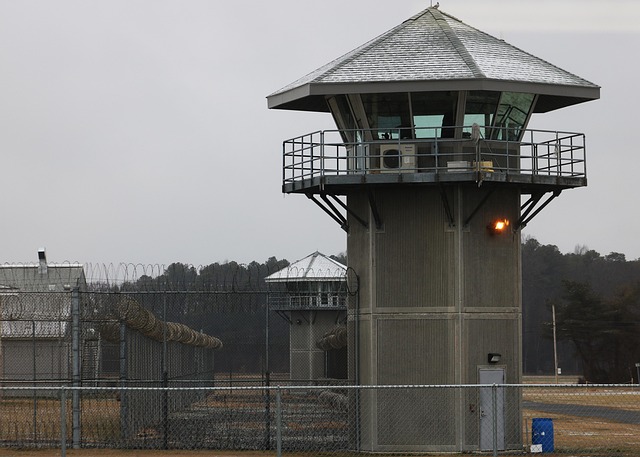Protecting political figures during transportation and events requires a specialized approach due to unique challenges in high-profile security for politicians. This involves strategic route planning, advanced communication systems, and specialized vehicles with state-of-the-art security features. Efficient convoy coordination, dynamic planning, risk assessments, and regular drills enhance safety and responsiveness. In the digital era, advanced surveillance systems, biometric identification, and GPS tracking further secure events. Successful implementations, like presidential campaigns and international summits, showcase best practices in high-profile security for politicians.
In the realm of political events, ensuring the safety and secure transportation of key figures is paramount. High-profile security for politicians presents unique challenges, from potential threats to complex logistics. This article explores essential components of a robust transportation plan, strategies for convoy coordination, and the pivotal role technology plays in enhancing event safety. We delve into case studies showcasing successful implementations of strict security measures for political convoys, offering valuable insights for navigating these intricate security landscapes.
Understanding the Unique Challenges of High-Profile Security for Politicians
Protecting political figures during transportation and events demands a nuanced approach due to the unique challenges inherent in high-profile security for politicians. These individuals often become targets, necessitating stringent measures to mitigate potential risks. Their public appearances, whether at campaign rallies or official functions, require meticulous planning to ensure their safety.
The dynamic nature of political events poses logistical hurdles. Convoys must navigate crowded streets, unpredictable traffic, and sometimes hostile environments. Coordinators face the daunting task of balancing efficient movement with robust security protocols, ensuring swift transportation without compromising the politician’s exposure or safety. This delicate equilibrium requires a specialist understanding of risk assessment and swift reaction strategies.
Essential Components of a Secure Transportation Plan
When planning secure transportation and convoy coordination for political events, several essential components must be meticulously considered to ensure the safety and protection of high-profile figures like politicians. Firstly, route planning is crucial. It involves identifying safe and efficient paths that minimize potential risks while also accounting for the movement of large crowds or other vehicles during the event. This strategic approach helps maintain control over the environment surrounding the convoy.
Additionally, advanced communication systems are vital for real-time coordination among all involved parties, including law enforcement, security personnel, and political leaders. These systems enable quick responses to any changes in plans or unexpected situations, enhancing overall resilience against potential threats like ambushes or accidental encounters. Furthermore, employing specialized vehicles equipped with state-of-the-art security features such as ballistic protection, advanced surveillance equipment, and rapid response capabilities is indispensable for high-profile security operations involving politicians.
Strategies for Efficient Convoy Coordination
In the realm of high-profile security for politicians, efficient convoy coordination is paramount to ensure the safety and smooth transportation of VIPs during political events. One key strategy involves utilizing advanced communication systems. By employing encrypted radio channels and real-time GPS tracking, security teams can maintain constant contact with each vehicle in the convoy, swiftly addressing any potential threats or deviations from the planned route. This technology enables quick decision-making and precise navigation, crucial for navigating through dense urban areas or unpredictable traffic conditions.
Additionally, detailed risk assessments and dynamic planning are essential components of successful convoy coordination. Security professionals must consider various scenarios, including unexpected delays, adverse weather conditions, and potential security breaches. By implementing flexible plans that account for these variables, they can adapt on the fly, ensuring the safety and timely arrival of political figures. Regular drills and simulations further enhance readiness, allowing teams to refine their coordination skills in a controlled environment before deploying them during actual high-profile events.
Technology's Role in Enhancing Political Event Safety
In today’s digital era, technology plays a pivotal role in enhancing the safety and security of political events featuring high-profile politicians. Advanced surveillance systems, including real-time video monitoring and biometric identification, provide an extra layer of protection by enabling quick response times to any potential threats. These technologies allow for precise tracking and analysis of movements, ensuring that everyone involved, from key speakers to VIPs, remains secure within the event perimeter.
Furthermore, digital communication platforms facilitate efficient convoy coordination. Secure messaging apps and GPS tracking ensure smooth transportation logistics, minimizing delays and enhancing the overall security of political leaders during their travels. This integration of technology not only strengthens the safety measures but also streamlines the organization process for event planners, contributing to successful and secure political gatherings.
Case Studies: Successful Implementation of Strict Security Measures for Political Convois
In recent years, several case studies have demonstrated the successful implementation of strict security measures for political convoys, showcasing best practices in high-profile security for politicians. One notable example is the enhanced security protocol employed during the presidential campaign trail in a major North American city. Local law enforcement, in collaboration with private security firms, coordinated a detailed plan that involved advanced surveillance technology, real-time communication systems, and meticulously planned routes to ensure the safety of the candidate and their entourage. This comprehensive approach included vehicle barriers, armed escorts, and quick-response teams strategically positioned along the route, effectively neutralizing potential threats.
Another successful case involves a series of international summits where stringent security was required for high-ranking political figures. Security agencies and logistics specialists worked together to create a robust convoy system that incorporated advanced communication devices, GPS tracking, and customizable vehicles tailored to each leader’s needs. The success of these operations lies in the seamless coordination between various agencies, proactive threat assessment, and flexible yet stringent security protocols that adapt to dynamic environments, ensuring the secure transportation of political figures during high-stakes events.
Ensuring secure transportation and effective convoy coordination for political events is paramount to safeguarding key figures and maintaining public safety. By understanding the unique challenges of high-profile security, implementing robust planning, leveraging technology, and learning from successful case studies, event organizers can navigate potential risks with confidence. These strategies collectively contribute to a safer environment, allowing politicians to focus on their missions while delegating logistical complexities to well-prepared professionals.
